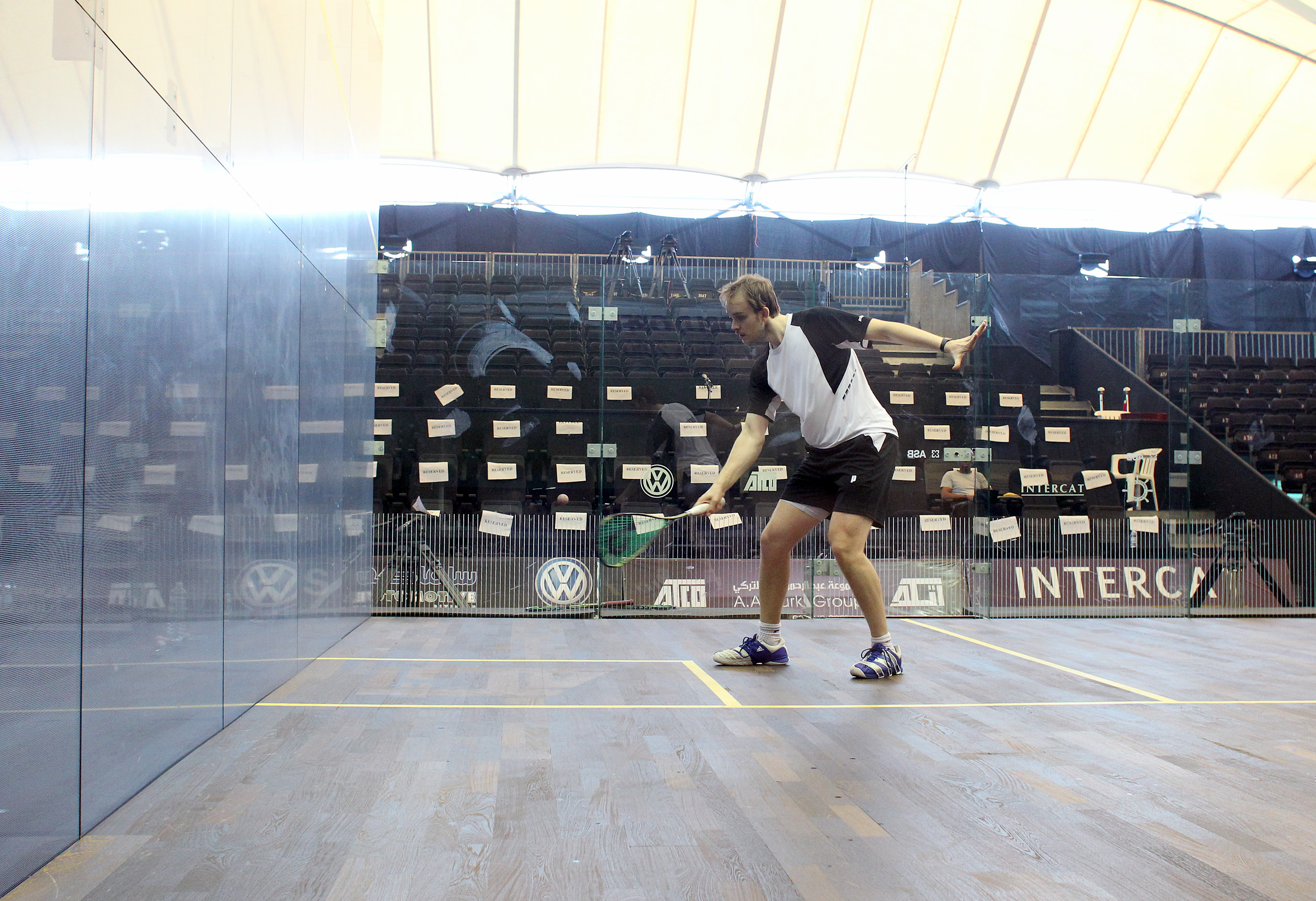By Richard Millman, Owner – The Squash Doctor Corporation
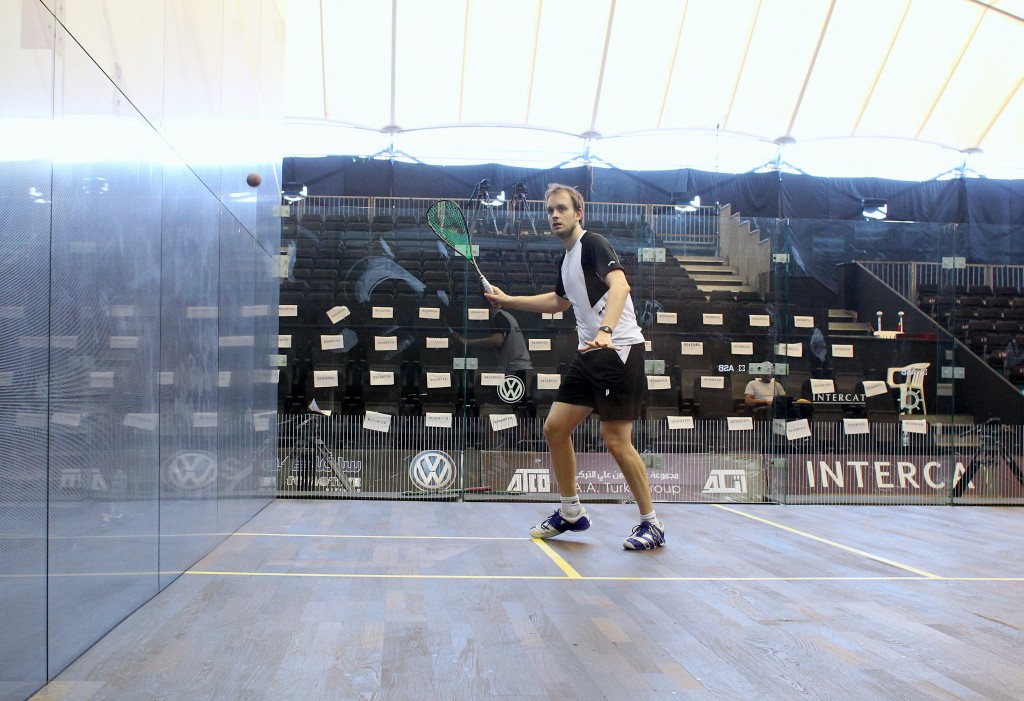
Most of us, when we first learn the technique of hitting the ball, are happy just to be connecting. But as we move forward in the game, it becomes increasingly important to be aware of the minute detail of the movements that our racquets make. Intimately understanding precisely the pattern that your swing makes; specifically which spot on the racquet face you are going to strike the ball with; and the exact moment that contact between the racquet and the ball is going to occur, are all essential for advanced control.
Consider for a moment the exact pattern that your swing makes when you use a full swing. If you notice, a normal swing is a wonderfully curvy combination of a letter ‘C’. It starts behind your head, rotates forward in front of you to strike the ball, before curving again behind your head on the follow-through, before finishing above your head to finish.
Consider this swing and how it would match up to the shape of the side wall—an absolutely straight line. Not a good combination I would submit. The only moment during an attempted straight drive that the side wall and the normal racquet swing pattern are parallel is at the moment of contact. And if you are a teensy-weensy bit early or late, you end up either pushing it into the wall or pulling it away.
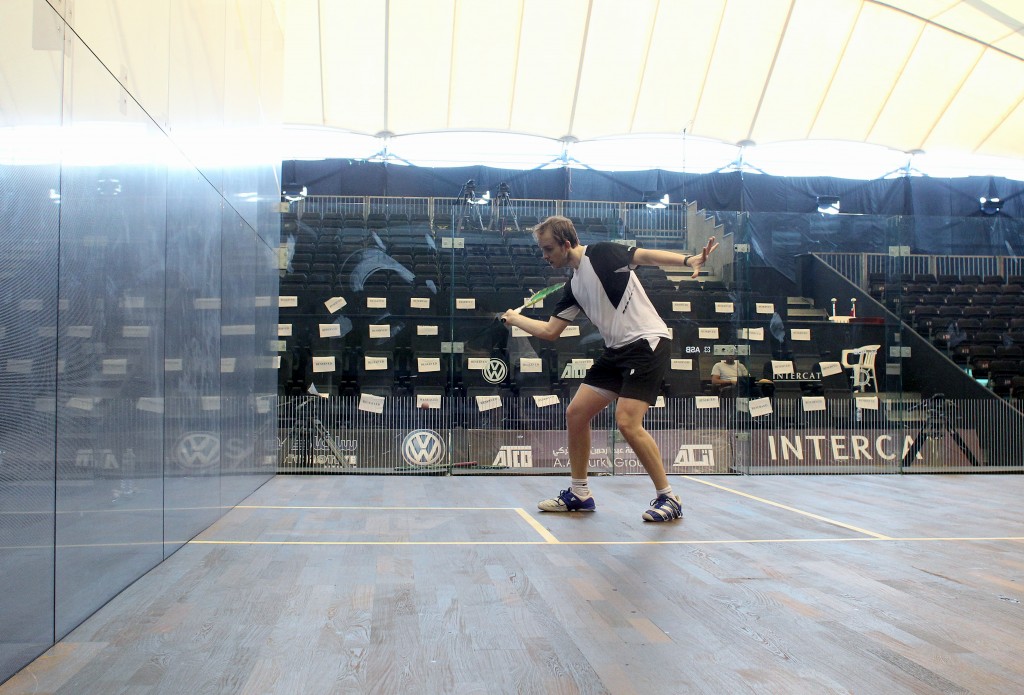 So how do advanced players manage to keep the ball straight? Very simply by adjusting the swing pattern to fit the line of the wall.
So how do advanced players manage to keep the ball straight? Very simply by adjusting the swing pattern to fit the line of the wall.
To do this you need to become aware of the precise movements that the tip of your racquet makes during the full duration of your swing. Once you become more fully aware of your racquet tip, you need to learn to slice or cut the ball. Making your racquet slice (backspin) the ball changes the shape of your swing pattern through the strike zone to ‘flatten or straighten out’ the usual curvy shape. To help you with this, look at the floor boards of the court and try to make your racquet tip follow the line of the floor boards as you strike the ball with a very open racquet face.
A wonderful drill to help you to practice this skill is to spend three to five minutes in each of three positions on the side wall. Position one is midway between the front wall and the short line. Position two is to stand in the middle of the service box and Position three is to stand midway between the back wall and the service box.
 In each position, try to slice the ball along the wall, keeping the ball as close to (or on) the wall as often as you are able. Prepare your racquet as soon as you strike When looking to drive a ball straight, a “linear” swing pattern will help. Note how James Willstrop’s follow-through (left) is not up and over his opposite shoulder. It helps to keep the floor-boards in mind as a guide. the preceding ball and reposition your feet for every shot to create a ninety degree angle between your set up foot and the direction you want your shot to go.
In each position, try to slice the ball along the wall, keeping the ball as close to (or on) the wall as often as you are able. Prepare your racquet as soon as you strike When looking to drive a ball straight, a “linear” swing pattern will help. Note how James Willstrop’s follow-through (left) is not up and over his opposite shoulder. It helps to keep the floor-boards in mind as a guide. the preceding ball and reposition your feet for every shot to create a ninety degree angle between your set up foot and the direction you want your shot to go.
Do this in all three positions on both sides of the court once or twice a week for a month, and you will be amazed at how tight you learn to hit the ball and how comfortable you become adjusting your swing pattern to a linear pattern that closely matches the line of the wall.
Some of the improved direction you will obtain by using the linear/sliced swing will come from the geocentric force imparted by making the ball spin—much as a Frisbee will maintain a straight line.
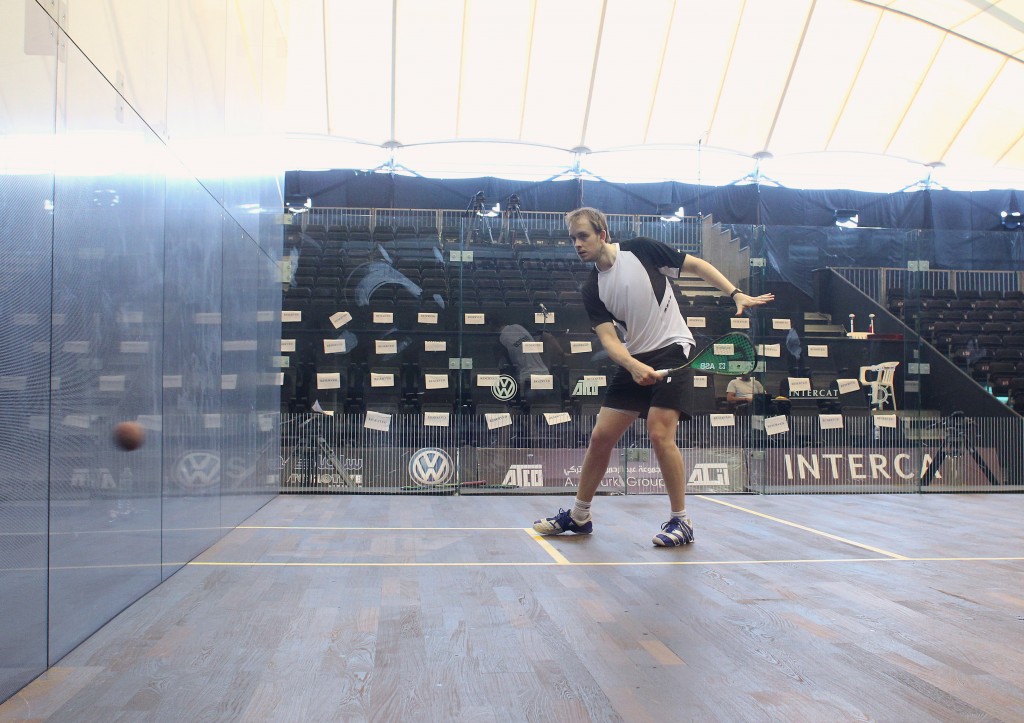 This advantage isn’t limited to shots played straight down the wall either. Whenever direction is more important than power/ speed, use your linear/slice swing pattern to ensure more directional precision. Because the slice decreases the possibility of misdirection at contact, as compared with the regular radial/curvy swing, the accuracy of your shots will improve.
This advantage isn’t limited to shots played straight down the wall either. Whenever direction is more important than power/ speed, use your linear/slice swing pattern to ensure more directional precision. Because the slice decreases the possibility of misdirection at contact, as compared with the regular radial/curvy swing, the accuracy of your shots will improve.
Of course if your opponent has fallen over in the course of retrieving your last ball, then precision becomes less important and simply striking the ball as quickly and as far away from the opponent becomes the main priority. But how often do you have the opportunity to play a shot with your opponent completely down and out?
There is one more version of a linear swing that is being seen more and more on the pro circuit. That is the top and side spin shot. If you watch the world’s leading players— particularly at the front of the court on a tight short ball—you will see them run the racquet face over the top and side of the ball. The very tip of the racquet still follows the pattern of the side wall (straight) but, by promoting the racquet ahead of the hand (much like a table tennis player might), the players impart a top and side spin that results in a wall hugging action that brings the ball back tight to the side wall. This skill is also being used increasingly from the mid and back court areas. Slight top and side spin is used to return tight shots from tight shots or to make semi-tight balls even tighter.
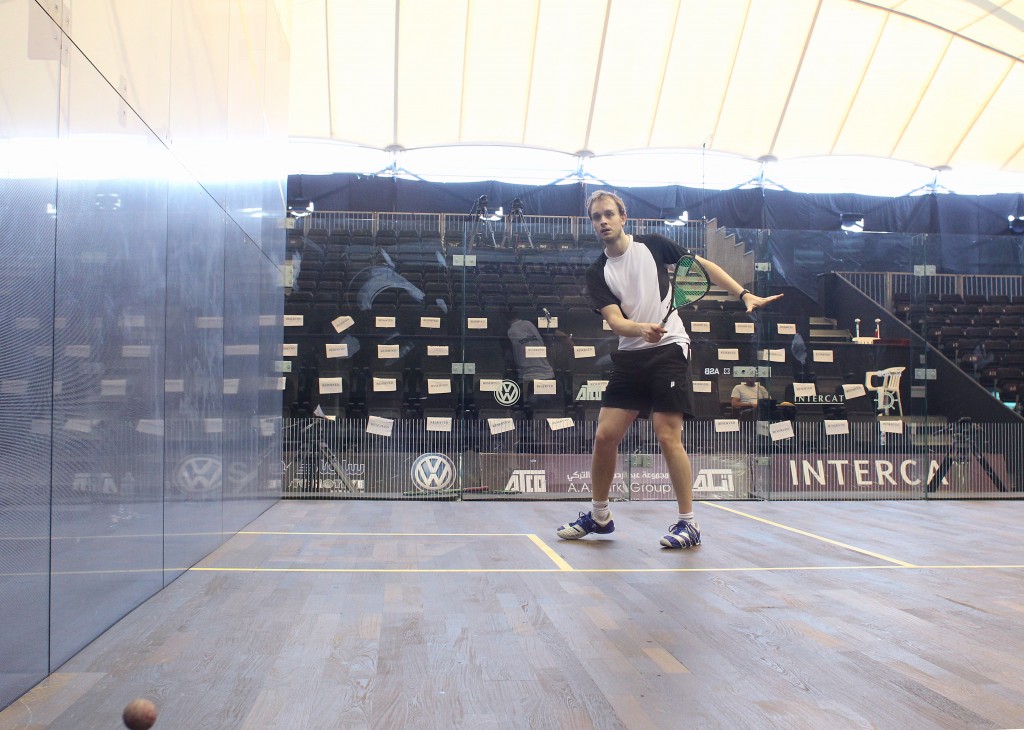 Top and side spin skills require a great deal of practice. They are extremely valuable (why would the most skillful players use them otherwise?), but I recommend that you work on—and perfect—the slice/undercut ball first before venturing toward top and side; unless you personally find that you have an affinity for that skill. We are, after all, trying to encourage you to be unique squash players, making the most of your personal assets. Most players will not find top and side an easy skill, however, and this is why I advise you to work on the slice version of the linear swing pattern first.
Top and side spin skills require a great deal of practice. They are extremely valuable (why would the most skillful players use them otherwise?), but I recommend that you work on—and perfect—the slice/undercut ball first before venturing toward top and side; unless you personally find that you have an affinity for that skill. We are, after all, trying to encourage you to be unique squash players, making the most of your personal assets. Most players will not find top and side an easy skill, however, and this is why I advise you to work on the slice version of the linear swing pattern first.
So chop away with your linear swing my friend—both with an upward and downward trajectory (depending on the length you want to attain) and watch your shots scythe their way, arrow-like to their destinations!
By the way, you should break fewer racquets too—as your racquet will strike the wall (if you hit it!) more along the axis of the frame instead of across it. We save you money here at Squash Magazine!
Next month—What balance and weight of Racquet should you buy and why?


